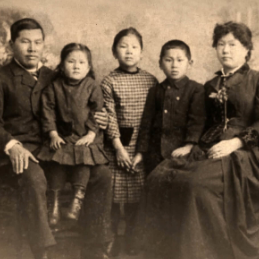
Mamie Tape
the Fight for Equality in Education (1885)
Mamie Tape, along with her parents Joseph and Mary Tape, challenged the barring of Chinese American students from San Francisco public schools in the landmark civil rights case Tape v. Hurley of 1885.
Tape v. Hurley was noteworthy given racial prejudice and anti-Chinese sentiment at the time. In 1882, Congress had passed the Chinese Exclusion Act, which barred Chinese workers from immigrating to the United States and prevented them from becoming naturalized American citizens. In California, Chinese immigrants also faced legal restrictions on their rights to marry and testify against white Americans. In every facet of life, the Chinese endured racial stereotypes.
Joseph and Mary Tape were both immigrants from China who married and settled in a neighborhood of San Francisco with few other Chinese immigrants. Joseph Tape was a well-regarded businessman in both Chinese and white communities. Mary Tape had been raised in a Ladies’ Protection and Relief home and had been schooled in English and Westernized manners. The Tapes’ daughter Mamie was born in 1876. She was the oldest of four children.
When Mary Tape tried to enroll eight-year-old Mamie at Spring Valley Primary School, the school in their San Francisco neighborhood, school authorities turned Mamie away because of her Chinese ancestry. Though a California state law passed in 1880 declared that all children had the right to receive a public education, custom and local school board policy meant that Chinese students attended mission-run schools in Chinatown rather than the city’s white schools.
Joseph Tape sued the San Francisco Board of Education on Mamie’s behalf. On January 9, 1885, the Superior Court of California ruled that excluding children of Chinese parents from public schools violated state law and the equal protection clause of the Fourteenth Amendment. The California Supreme Court upheld the original decision when it was appealed.
Despite the favorable ruling, the Tapes were not successful in enrolling Mamie in Spring Valley. In response to the verdict, state lawmakers quickly passed a law that established separate schools for children of Mongolian or Chinese descent. The Board of Education claimed that despite the segregation inherent in this law, Chinese American children could still receive a public education.
Tape v. Hurley became a landmark case addressing segregation in public schools. After nearly seventy years and subsequent rulings on the federal and state level, the 1954 U.S. Supreme Court case Brown v. Board of Education finally ruled that racial segregation in public schools is unconstitutional.
